This post contains affiliate links, which means I may earn some money if you click on one. Don't worry, there is no additional cost to you. Thank you for supporting my blog.
One of the mistakes a new gardener often makes is not being prepared for pests. I was no different. I knew I was not prepared in that department, but decided to wing it. I wanted to keep the garden 100% organic, so conventional pesticides were out of the question. I read up a little bit on pests, (like the dreaded Tomato Hornworm), and did plant some Borage to prevent an infestation, but that was the extent of my pest prevention preparation. Experience, after all, is the best teacher, and I knew I would be learning a lot as the season progressed.
I decided to write about two of my biggest pest problems today, in the hope that if someone else is in the same situation I was, perhaps he or she can learn from my mistakes. This year I already feel much better prepared for some of the known nuisances at the community garden. With these two particular pests I found that a physical barrier worked the best for me.
Battle with the Bunny
My first taste of crop loss happened fairly early in the season. It was exciting to see some greens pushing up through the mulch paper. I had a few “squares” of beets, carrots, collards, lettuce, and green beans sprouting; until the attack of the bunny. One morning Lily and I showed up to water our plants and saw something had started to chomp on our green bean plant. I didn’t think much of it at first, someone told me it was probably a Japanese Beetle. Then, a few days later, a good portion of our beet greens disappeared, as well as my only Collard plant. I can’t remember if it was that day or the day after, but we caught the suspect. We saw a cute little bunny running away from our garden.
After talking to a few of the other gardeners, I discovered that the bunnies are a BIG problem at the community garden. There is no gate around it, and it sits smack in the middle of a park. I knew I had to do something, but I was not sure what.
No one else seemed to know what to do either. Some people used pinwheels, they supposedly scare them. Some people mentioned blood meal. I read that you can collect hair from your dog and spread it around your garden. (My dog did not shed enough, and collecting dog hair from a grooming place was not incredibly appealing to me).
I thought about building a box around my greens and putting chicken wire over it. (The Square Foot Gardening Book has instructions for this). I knew a physical barrier was what I needed. Then I found myself sizing up a couple of old dog exercise pens we had in the garage. I was not sure it would be big enough for the entire garden, but it seemed to only be the greens the bunny was chomping on. I knew I had to only enclose one small section. So I brought it to the garden and was able to surround a little more than half of my garden with it.
It worked.
People told me the bunny would burrow under it and still get my crops, but that didn’t happen. I guess that was too much work for it, and there were many other gardens to choose from. Food was not in short supply. I was also able to enclose my sweet potato plants, which was a relief. I did read that deer like to eat sweet potato plants, and I knew that was a potential problem as well. With the pet fences, I was able to kill two birds with one stone.
Cabbage Worms/Loopers
This was the pest I was NOT prepared for in the least. I had no idea what a nuisance these little caterpillars would be. The season started out fine. The cabbage worms did not come until the middle/end of June. But when they came, it was horrific. (If you see the little white butterflies fluttering around your garden, beware).
People call them cabbage worms, but they are not worms, they are caterpillars.
I am pretty sure what I encountered were Cabbage Worms (Pieris rapae).
They came at the worst possible time too. I was in the middle of packing/getting ready for a 4 day weekend trip to the U.P. of Michigan. A few days before we were supposed to leave I started to see the “worms” and the damage they were doing to my cabbage plants. It was mostly the cabbage plants that were suffering, though the Broccoli and Kale were hit too. One day I spent an hour picking off these little caterpillars off my plants. It was really tedious, and not fun. I knew I had to do something, fast.
Fortunately, my cabbage plants were big enough to harvest. So I harvested them and made them into sauerkraut right away. (It was the best sauerkraut I ever had, no joke. There is something to be said for homemade sauerkraut with a FRESH cabbage).
But I still had broccoli and kale plants that were getting hammered. I did not know what their little eggs looked like yet; I was just picking off the caterpillars.
So again I turned to my trusted Square Foot Gardening book and read about using PVC pipes to make a cover. I had my husband make a wood frame to surround my “Brassica” section, and arched the PVC pipes over that section.
I went to the thrift store and found some sheer curtains and draped/pinned it over the PVC pipes. I did not own a staple gun yet, so the sheer curtain was only held to the supporting frame with clips. It wasn’t perfect, but it was a good temporary solution. It was enough to keep the plants from getting completely overtaken while we were away for the weekend.
I was able to harvest the broccoli and the kale a few weeks after, so I avoided a complete massacre. But I saw some of the broccoli plants that were attacked in my neighbor’s garden and the leaves were completely GONE! There was only a shadow of a broccoli plant that remained. It was very sad.
(This actually happened to one of my broccoli plants on my patio. I had a few plants I was growing in boxes, as an experiment. I had these plants covered with tulle, but not very effectively. The damage was unbelievable).
For the fall season I had a better plan. I ordered a roll of tulle, and used that to cover my plants IMMEDIATELY after I transplanted them. It worked very well. (Tulle, if you don’t know, is material used for bridal veils, and wedding decorations. It looked a lot nicer than the sheer curtain from the thrift store. It was also more breathable, allowing more circulation of air. I bought a staple gun and literally stapled it to the wood frame that surrounded the Brassica section. It was not wide enough to completely cover the PVC frame, so I did have to clip the two pieces to the PVC pipes, which was not ideal. (The netted barrier worked out pretty well. I hardly had any caterpillars in the cabbage and broccoli plants under the net).
This year I am even more prepared. I sewed the two pieces of tulle together, and I have my Brassica plants in individual raised boxes. I am hoping to avoid any caterpillars in my broccoli and cabbage plants this year!!
Other gardener tips I received on cabbage worm/looper pest prevention/protection:
Diatomaceous Earth
Diatomaceous earth is the fossilized remains of organisms called diatoms. Their skeletons are sharp and made of silica. Apparently, sprinkling plants with it prevents the butterflies from landing on the plants.
Pros – It is non-toxic and effective. The butterflies will not land on plants covered with it. The sharp pieces of the diatom skeletons are very abrasive to butterflies and their larvae. I observed the behavior of some of these butterflies after my neighbor gardener covered her plants with it. It definitely seemed to deter the butterflies from landing.
Cons– It is difficult to apply it evenly, and it washes off when it rains. (You have to reapply it a lot).
Bacillus Thuringiensis
Bt is naturally found in soil, and when it is ingested by caterpillars it is very toxic. (Source). The proteins produced is very destructive to the digestive system of immature insects.
Pros – This type of pesticide is allowed at the “organic community garden”.
Cons – I didn’t use it because I did not have enough information about it to make a decision about it. I avoid corn mostly because it has been trans-genetically modified to include the Bt toxin. I just was not sure if it could possibly effect my gut microbiome if ingested, so I decided against using it for now. (I work very hard at keeping my gut bacteria healthy, and I did not want any unwanted disturbances. Sadly the effect of any pesticides on the gut microbiome has not been well researched.
Here are some other ideas for cabbage worm control: http://thelivingfarm.org/project/eliminate-the-cabbage-worm/
I also purchased an agrohomeopathy product I will be using this spring to promote resistance to the caterpillar damage. I will have a few plants that will be “exposed”, so I will be able to really test the effectiveness of the Bombyx processiona.
If you are planning on growing cabbage, broccoli, cauliflower, mustards, Bok Choy or kale, make sure you have a plan of attack against these worms. They are not a pest to underestimate.
So those were the two most obnoxious pests I had to deal with last year. There were other pests, but they did not do as much damage. (The Japanese beetle is one example I have written about before.
What was the worst pest you have encountered in your garden? Have you ever battled a bunny or cabbage worms?

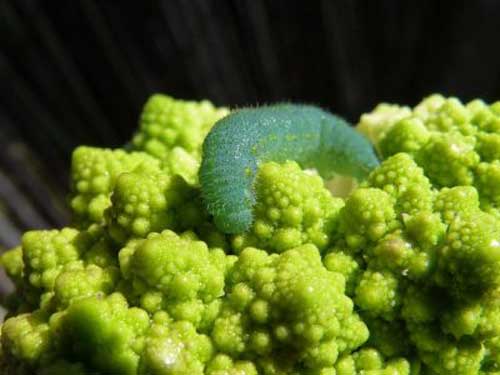
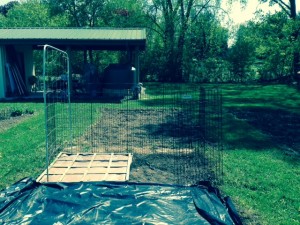
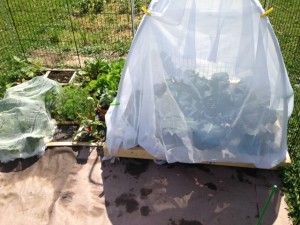
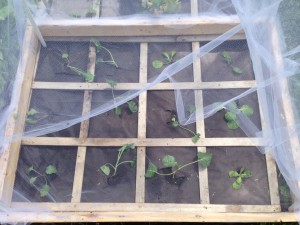

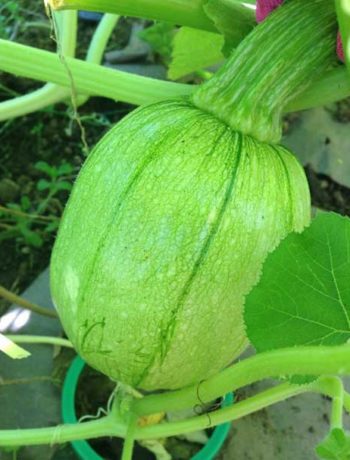
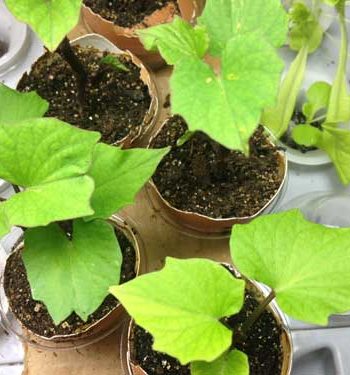

No Comments